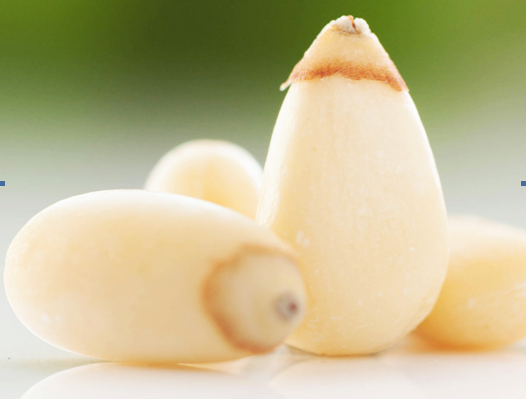Use fine varieties. In summer due to high temperature and rain, it is not conducive to the growth of radish, so the cultivated varieties must be selected from varieties with good heat resistance, drought tolerance, strong pest resistance and capable of forming fleshy roots under high temperature conditions, with hot white and small hook white. , Xia Changbai II, East Huimei, Xia Meilian early students on the 3rd, Xia Kang 40 days.
Soil fertigation. Choose sandy loam soil with flat terrain, deep soil, and good drainage and water retention conditions. After harvesting the former crops, remove the weeds in the field in time, then apply 4,000 kg of sufficient circumfertilizer, 15 kg of potassium sulfate, and 30 kg of superphosphate per 667 square meters to conduct deep ploughing and soil preparation. After the flat and thin, the ridge cultivation is carried out. The ridge distance is 80 cm, and the ridge height is 15-20 cm. Each ridge is 2 rows. The spacing between the rows is 20 cm and 20-25 cm.
sowing. 1 Seeding rate: 0.5 kg for every 667 square meters of large-sized varieties, 0.75 to 1 kg for medium-sized varieties, and 1.5 to 2 kg for small-sized varieties. 2 sowing time: summer radish sowing time according to market demand from June to August batches of sowing. 3 Seeding methods: Large-sized varieties using hole sowing, hole depth of 1.5 to 2.0 cm, 2 to 3 seeds per hole, 2 cm thick screened fine soil after sowing; mid-type varieties using hole sowing or drilling, using drill At the time, the depth of the ditch requires 2 to 3 cm; small species can be sown.
Field management. 1 and time seedlings, Dingmiao: seedlings grow rapidly after unearthing, to be timely Miao Miao to ensure Miao Qi, Miao Zhuang. The first time the seedlings were carried out when the cotyledons were fully developed, and the second time the seedlings had two or three true leaves. When the seedlings grow to 5 to 6 leaves, the fleshy roots of the radish will be determined when they are broken. 2 cultivating, weeding and earth-cultivation: In combination with seedlings, we should carry out cultivating and weeding, and when cultivating, we must first shallow and deep, and avoid root damage. The first and second time when the seedlings shallow plough, can loosen the topsoil; after the third time after the seedlings, a deep plowing, and the soil in the ditch dipped in the surface, in order to prevent down seedlings. 3 Watering: Summer temperatures are high, soil moisture evaporates quickly, according to the soil moisture and radish fertility characteristics appropriate timely watering. Germination period: watering according to the principle of "three waters and seedlings", that is, watering once after sowing, in order to facilitate the germination of the seeds; pouring a water when seeding and arching the soil to facilitate emergence; after the seedlings are poured, water is poured again. To facilitate the growth of seedlings. Seedling stage: Seedling stage Since seedlings have a shallow root system and require a small amount of water, they should be properly watered according to the principle of “less pouring and pouringâ€. Growth period of leaf: In this period, the number of leaves in the upper part of the radish increases, the leaf area gradually increases, the fleshy roots begin to expand, and the water requirement increases rapidly. Watering should be carried out according to the principle of “appropriate ground pouringâ€. The flourishing root of fleshy roots: During this period, the maximum amount of water is needed, and it is necessary to diligently water the soil to keep the soil moist so as to avoid the lack of water to cause fleshy roots. 4 fertilization: radish seedlings after 667 square meters with water flushing urea 8 ~ 15 kg, in order to promote the growth of the leaves; when the flesh root bare shoulder, with water flushing urea 5 ~ 10 kg, potassium sulfate 10 kg, superphosphate Calcium 3 ~ 5 kg, in order to promote meat root swelling. In the radish fleshy roots began to expand and the peak of expansion can be sprayed with 0.3% borax, 0.4% calcium chloride and 0.3% borax mixture, or 0.2% potassium dihydrogen phosphate and 0.3% borax mixed several times to promote the quality of radish The swelling of the roots.
Pest control. In summer, the temperature is high and there are many insect pests, mainly including cabbage caterpillars, aphids, diamondback moths, and yellow striped beaks. During the prevention and control, except for the black light and yellow board trapping in the field, in the initial stage, the yellow stripe beetle can be sprayed with BT EC 800 to 1000 times or 80% trichlorfon WP 1000 times; for locusts and vegetables Greenworm and Plutella xylostella can be controlled by 48% of Lost emulsion 1000 times, 10% of imidacloprid wettable powder 2500 times, and 5% of Thioctamol EC 1000 times, spraying alternately every 5-7 days, even spraying 2~ 3 times.
Harvested in time. The harvest time of the summer radish is still in the high temperature period. After the flesh root is completely swelled, it will be marketed in time according to the market demand.
Pine nuts (also called pignoli) are the edible seeds of pines (family Pinaceae, genus Pinus). About 20 species of pine produce seeds large enough to be worth harvesting; in other pines the seeds are also edible, but are too small to be of notable value as human food. Our Chinese pine nuts grow in Heilongjiang and Jilin province of China. The mainly varieties are pure red pine nut kernel and cedar pine nut kernel. Pine nuts have been eaten in USA, Europe, Asia and many other countries. They are frequently added to meat, fish, salads and vegetable dishes or baked into bread.

Pine Nut Kernel
Dry Fruit Pine Nut Kernel,Pine Nut Pure Red,Wholesale Pine Nut Kernel,Raw Pine Nut Kernel
Ningxia Shun Yuan Tang Herbal Biotech Co., Ltd. , https://www.nxshunyuantang.com